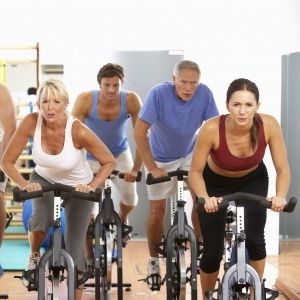Baby Boomers: Stay Fit and Injury Free with Exercise Tips from the American Academy of Orthopaedic Surgeons
As we age, regular exercise is critical for maintaining and improving bone and muscle strength. And yet if not done properly, exercise can result in pain and injury, especially for people older than age 50.
The baby boomer generation, those born between 1946 and 1964 (ages 49 to 67), are at increased risk for:
- Tendonitis, tendonopathy and tendon tears (inflamed, damaged or torn tendons, the structures that attach muscles to bone).
- Bursitis (inflammation of the fluid-filled sacs that act as cushions between bones, tendons and muscles in the shoulder, elbow, hip, knee and heel).
- Arthritis (deterioration of the joint cushions).
- Back pain.
- Sprains and strains (torn, pulled or injured ligaments or muscles).
The Consumer Product Safety Commission (CPSC) estimates that nearly 241,000 individuals age 50 and older sustained exercise-related injuries in 2012.
“Exercise is essential to ensuring an active, independent and healthy lifestyle, especially as we age,” said Philadelphia-area orthopaedic surgeon and American Academy of Orthopaedic Surgeons (AAOS) spokesperson Nicholas A. DiNubile, MD. “However, as we age our bodies change and become more vulnerable to injuries. More than ever, proper equipment and clothing, regular warm up exercises, and slowly increasing the intensity or duration of exercise, are critical. In addition, certain orthopaedic conditions require exercise modification, such as incorporating some of the exercises learned in rehabilitation into our daily exercise regimens.”
The AAOS offers the following exercise safety tips for anyone older than age 50:
Warm up and Stretching
A warm up is different than just stretching, and usually requires “breaking a sweat” before you begin a more vigorous work out. Walking, bending, jumping jacks and running in place before exercise gets and keeps the circulatory system moving, and prevents injury. Stretching can be done before or after a work out.
Exercise consistently
Don’t succumb to the “weekend warrior” syndrome. Try to get at least 30 minutes of moderate physical activity every day. Remember that moderate physical activity can include walking the dog, working in the garden, playing with the kids or taking the stairs instead of the elevator.
Take lessons.
Consider taking lessons for the sport you love. Whether you’re a beginner or a long-time enthusiast, proper form and instruction reduces the chance of developing an overuse injury like tendonitis or stress fractures.
Wear the proper equipment.
Select the proper gear and shoes for your sport. For example, if you inline skate wear a helmet, knee pads and wrist and elbow pads. If you ski, snowboard or ride a bike, always wear a helmet.
Listen to your body
As you age, you may find that you are not as flexible as you once were, or that you cannot tolerate the same types of activities. If so, modify your exercise routine to accommodate your body’s needs. For example, if you’ve been a daily runner for many years, consider replacing a day or two of that activity with swimming, biking or another sport that puts less impact on your joints.
Use the 10 percent rule
When changing your activity level, increase it in increments of no more than 10 percent per week. Slowly build up to more miles each week until you reach your higher goal. This will prevent overuse injuries that may keep you from exercising or enjoying your favorite sport for some time. For strength training, also use the 10 percent rule and gradually increase your weights.
Develop and maintain a balanced fitness program
Develop a balanced fitness program that incorporates cardiovascular exercise, strength training and flexibility. A balanced exercise program will provide a total body workout, keep you from getting bored and lessen your chances for injury.
Take a break
Remember to take a break, if necessary. Hard workouts can take a toll on your body, and thus require strategies aimed at recovery. Learn to take a day off or cut back your training to allow the body to adapt and recover. Gentle stretching, light aerobic exercises and proper nutrition and hydration are all helpful to the recovery process.
Consult your doctor
If you develop or have had a sports or orthopaedic injury like tendonitis, arthritis, stress fracture or low back pain, consult an orthopaedic surgeon who can help design or modify your fitness routine to promote wellness and minimize the chance of injury.
More tips:
Sports Injury Prevention for Baby Boomers
Orthopaedic surgeons restore mobility and reduce pain; they help people get back to work and to independent, productive lives. Visit ANationInMotion.org to read successful orthopaedic stories.
Newsroom.aaos.org is your source for bone and joint health news, stats, facts, images and spokesperson interview requests.
Category: Articles





































If your vehicle has a current value of $10,000, but after repairs the diminished value is only $8,000,
you have lost $2,000 worth of vehicle value from those needed repairs.
The Insurance Company is not the enemy but they certainly are not your
friend. Now, remember that if you have suffered an injury in a car accident due to the negligence of other driver, there is no guarantee that you can recover your
medical bills or the expenses for your car damage in an easy way.